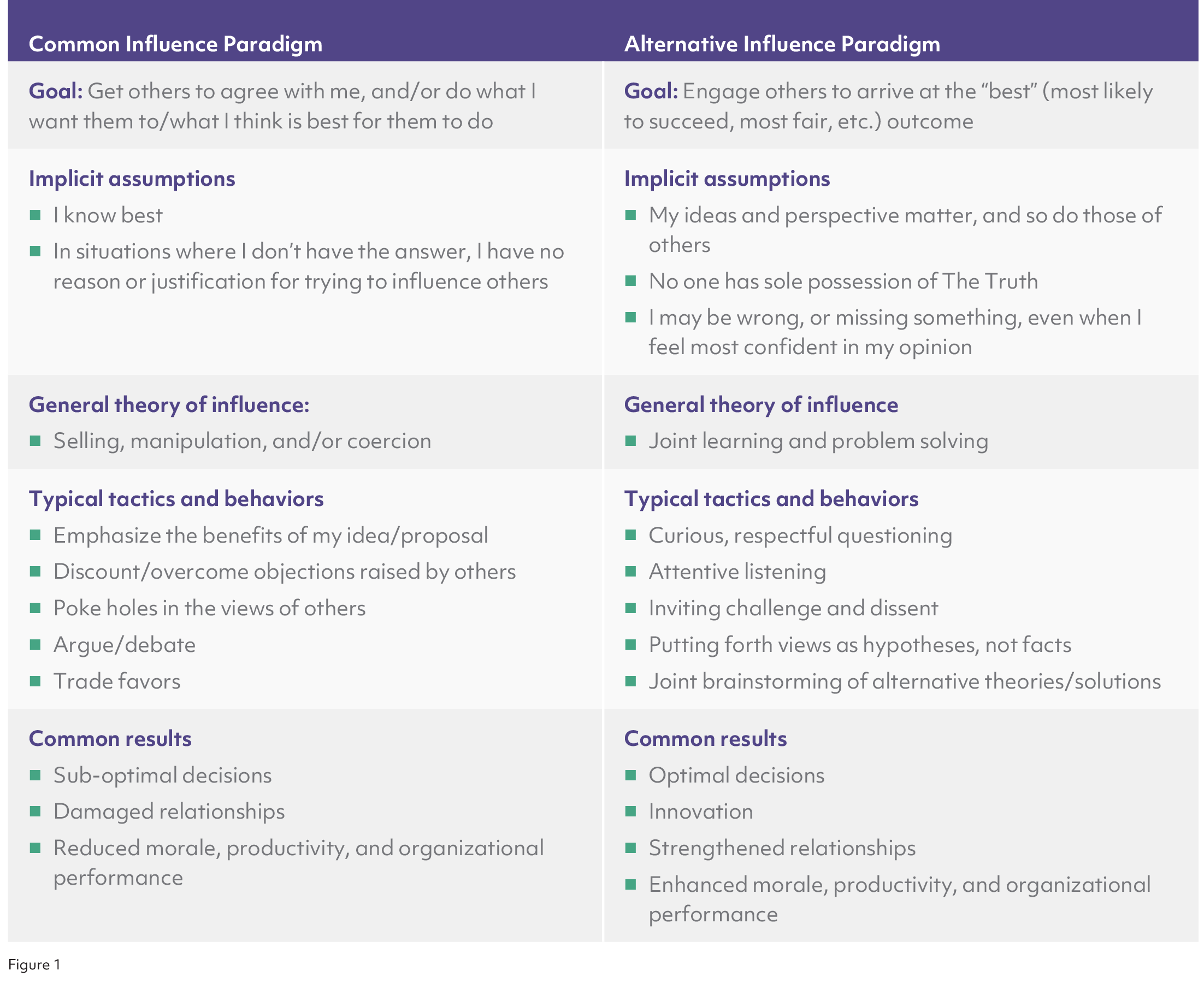
Matrixed structures have been the norm for some time, but management theories and leadership practices have not caught up. Those who lead and work in matrixed organizations consistently report that cross-functional conflict and decision making gridlock are pervasive and costly. Learning and development professionals increasingly recognize that influence is a competence that needs to be built at all levels of matrixed organizations. But as long as the dominant influence paradigm is one where we each focus on persuading others that we are right, and convincing them to do what we want — the fundamental challenges posed by the matrix will remain. (See Figure 1)

There is a sizeable body of literature and advice on influence and persuasion. While the specifics vary, at the most fundamental level, virtually all of it rests upon a common belief that influence is about getting others to agree with me, and/or do what I want them to (whether for my own gain, or because I think such a course of action is the “right one” based on logical or moral considerations). For example, popular author Robert Cialdini in his book Influence: The Psychology of Persuasion explains that much of his work is based on his experience “posing as a compliance professional, or aspiring professional, in a large variety of organizations dedicated to getting us to say yes.” [Our emphasis]
However, the real measure of successful influence should not be whether an executive or manager can get others to agree or comply, but whether they can work with others (who have different priorities and ideas) to align around a plan that is best for the organization and thus worthy of a “yes.” In organizations seeking to achieve excellence in a turbulent marketplace, we need a model of influence that is both practical and normative — one that goes beyond tactics for getting others to comply, and provides guidance for how to constructively engage multiple stakeholders in effective joint problem solving and decision making.
Put another way, we need to start thinking of influence not as something we do to others, but as something we engage in with others. Effective influence should be a two-way street. An ever growing body of research on cognitive biases high-lights how likely we are to over-estimate the validity of our own perceptions and to discount the views of those who see things differently. Arming ourselves, and those in our organizations, with better techniques to convince others that we are right is unlikely to lead to better decision making, nor is it likely to reduce conflict, increase staff engagement and morale, and enhance positive working relationships amongst colleagues. Indeed, one of the most important aspects of influence competency for leaders is how they can overcome natural self regard and confirmation biases and be more open to influence by the views of others.
Providing training focused on helping people gain agreement or compliance from others will simply create an influence arms race. Instead, influence training should be focused on helping people to be more curious about and less dismissive of conflicting perspectives, to exercise self-skepticism, to actively search for information that is inconsistent with their beliefs, to avoid binary (right/wrong and true/false) thinking, to engage in dialogue that is focused on learning, to generate creative solutions that dovetail conflicting objectives, and to avoid or defuse the interpersonal acrimony that often attends the clash of strongly held but different views.
Influence is necessary to both operate and lead in an organizational matrix where results cannot be achieved primarily through individual efforts or the exercise of direct authority. But a model of influence based on compliance leaves an enormous amount of value on the table, and is more likely to undermine collaboration across organizational boundaries rather than enhance it. We need to move beyond the desire to get others to “yes” (where that represents agreement with our own plan or request), and create organizations where everyone is better able to work together to harness different views to get to “best.”
.png?width=512&height=130&name=vantage-logo(2).png)




